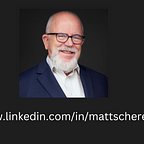How military professionals in remote locations can build a virtual transition network.
One would think that the military allows its members to spend some quality time building a network of job/career/transition influencers while still in uniform.
Yet, I know of a lot of active duty who are deployed overseas in some time zones that make it hard to talk to people via the phone. Still, LinkedIn allows military professionals to build a virtual network from the most remotest of locations.
In my military career, Thule AB, Greenland, was one of those posts where one was isolated from others. I would like those of you to go back into Mr. Peabody’s Wayback Machine with me to 1995, two years before I was slated to get out.
And, while I wasn’t in Greenland, I was overseas in Italy. No matter. For purposes of helping you, the military professional and his or spouse with building a network, let’s imagine Thule AB as the locale.
If the Air Force had given me such an assignment with about 18 months to my pending retirement, I would begin to search for professionals in several chosen industries, especially for those who reside in a place that I want to spend post-retirement years. Of course, LinkedIn wasn’t available then.
LinkedIn’s search capabilities can help you, the veteran-to-be, with finding professionals in an industry. Let’s suppose that I want to continue work in logistics management. I could start my research with that term and in communities that I want to relocate after my military service.
As I know there’s sometimes a lot of time after duty hours for those in remote locales, I would also look for professional logistics organizations. The Warehouse Education and Research Council has a program that likes to work with veterans. A search for WERC members on LinkedIn will help a transitioning military professional find possible mentors to contact.
Now that you, the military professional, has found someone, it’s important to put together a connection request. A note here on connection requests. With a premium account, LinkedIn allows someone to connect with anyone not in their first or second degree of connections.
For those of you new to LinkedIn, let me explain this concept. I’m connected to Tim Farrell, a retired Air Force officer. He and I are first degree connections. If I wanted to connect with someone like Ashley Guy, our first degree of connection would allow me to reach out to her.
Most military professionals do not have a large pool of connections, even though LinkedIn makes a lot of suggestions to possible friends or associates. The premium account allows every qualified military professional with one year of access. After that, it’s $60 per month.
One way to reach out to others is to look for the elippsis or the three dots next to the more section of anyone’s profile. LinkedIn typically allows people to connect those who are not in the second degree of connection when you click on this elippsis with a connection option.
A connection request should start with a purpose statement. I would suggest something like “I’m leaving the military in the next 18 months, and I would like to remain in the logistics field. I’m hoping that we can connect and perhaps discuss possible career choices. Right now, I am in Thule Air Base Greenland, so it’s hard to have a personal meeting. Yet, I would love to get your thoughts and ideas on my post-military job options.”
And what if you want to change careers? Of course, LinkedIn can allow you to ask professionals about their career. Let’s imagine that our logistics guy wants to go into accounting. He or she can tailor the request with something like this: “I’m retiring from the military, and I am completing my degree for accounting when I leave in 18 months. Could you help me determine if I want to work as a tax accountant or do I want another accounting field option? I’m currently serving the Air Force in Greenland, so we would have to use email or LinkedIn as a way to learn more about these options.”
I know from my own military experience that a remote tour can often provide extra time away from others. Yet, LinkedIn provides the opportunity to build a transition network from places like Greenland, Afghanistan and Africa.
(Please feel free to reach out: If you are a military professional serving a remote tour in Korea, East Asia, Afghanistan or some other remote spot, you can get a complimentary 30-minute appointment with me. Send me a LinkedIn request to connect and be sure to mention this when you do so.)
(Shameless plug: I’m in the process of completing a new book on military transition. Please look for it at your local online book sellers.)
